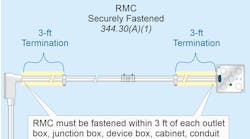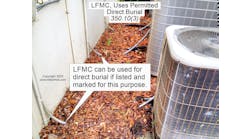Q. What locations are acceptable for the installation of overcurrent devices, according to the NEC?
Find the Answer
A. As noted in Sec. 240.24 of the Code, the following locations are acceptable for placement of overcurrent devices:
Circuit breakers and fuses must be readily accessible, and they must be installed so the center of the grip of the operating handle of the fuse switch or circuit breaker, when in its highest position, isn’t more than 6 ft, 7 in. above the floor or working platform, unless the installation is for:
1) Busways, as provided in Sec. 368.17(C).
2) Supplementary overcurrent devices aren’t required to be readily accessible [240.10].
3) For overcurrent devices, as described in Sec. 225.40 and Sec. 230.92.
4) Overcurrent devices located next to equipment can be mounted above 6 ft, 7 in., if accessible by portable means [404.8(A) Ex 2].
Overcurrent devices must not be exposed to physical damage. Note: Electrical equipment must be suitable for the environment, and consideration must be given to the presence of corrosive gases, fumes, vapors, liquids, or chemicals that have a deteriorating effect on conductors or equipment [110.11].
Overcurrent devices must not be located near easily ignitible material, such as in clothes closets.
Overcurrent devices aren’t permitted to be located in the bathrooms of dwelling units, dormitories, or guest rooms or guest suites of hotels or motels. Note: The service disconnecting means must not be located in a bathroom, even in commercial or industrial facilities [230.70(A)(2)].
Overcurrent devices must not be located over the steps of a stairway. Note: Clearly, it’s difficult for electricians to safely work on electrical equipment that’s located on uneven surfaces such as over stairways.



